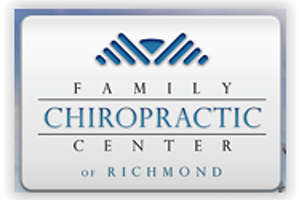Opting for Chiropractic Care Over Opioids for Pain Management
- Dr. Eric Carlsen
- Oct 18, 2022
- 4 min read

October 2022 is National Chiropractic Month and this year, the American Chiropractic Association will promote the use of non-drug approaches such as chiropractic services as a first line of defense against musculoskeletal pain.
Opioid analgesics are commonly used to treat acute and chronic pain; in 2016 alone, more than 60 million patients had at least 1 prescription for opioid analgesics filled or refilled. However, the use of this powerful pain medication prescribed for many patients has in part led to an opioid addiction crisis that has gripped the nation.
The health and economic burdens of opioid abuse on individuals, their families, and society are substantial. A recent report from Milliman reports the annual impact of opioid use in the United States may cost as much as $179 billion dollars in just one year. That amount included healthcare, lost productivity, treatment for addiction, mortality costs, child and family assistance, and the associated costs of involvement with the criminal justice system.
Musculoskeletal issues – specifically back and neck pain – afflict thousands of people each year, and add significant costs to our healthcare system. In some cases, it is believed that surgery, the use of opioids, or both, are the only recourse for those suffering from back or neck issues.
About 22 million Americans visit chiropractors annually seeking pain relief from such conditions. Chiropractors seek to first understand the core problem underlying a patient’s condition, and where indicated, to proceed with a manual therapy approach that will often include spinal and extremity manipulation to improve joint function and provide pain relief.
A key focus in the curriculum of chiropractic education programs is preparing student interns to identify and manage those patients most likely to respond to conservative manual manipulation, and not only help to reduce pain in patients, but possibly to reduce the need for opioids or surgery. An additional important part of chiropractic education is training for future portal of entry health care providers to identify potential pathology and contraindications to manual therapy and to recommend appropriate referral and co-management of many health conditions.
The value of prescribed pain medication is not in question. They provide welcome relief for people fighting a variety of conditions, including cancer and chronic pain. They can also be extremely effective for short-term, post-surgical pain. A patient who experiences less pain will be more comfortable and enjoy better rest, which can aid in healing. This is positive for those who must endure an invasive surgical procedure.
But, what if the need for drugs and surgery could be reduced?
Some health care professionals have begun to examine more closely the value of non-surgical, non-pharmaceutical options such as chiropractic care, exercise, tai chi, yoga, acupuncture, and other options. If such activities can be effective to manage musculoskeletal pain with decreased use of opioids, a patient is likely better served.
The fact that opioids can be an effective pain reliever is not in dispute. However, what cannot be overlooked, is the terrible consequences that can result for those who become addicted. The danger of pain medication is revealed in the numbers and shows how quickly its use can lead to a downward spiral if not monitored closely.
Recent research has found that one day of opioid usage carried a 6% chance of being on opioids one year later. After eight days of use, that chance increased to 13.5%, and after 31 days of use, the chance spiked to nearly 30%.
West Virginia, which at one time, had the highest prescription opioid death rate in the nation, enacted the “Opioid Reduction Act.” This measure urges practitioners to consider treatment options other than opioids including, “physical therapy, acupuncture, massage therapy, osteopathic manipulations, or chiropractic care.” State legislation mandates that insurers licensed in West Virginia must cover 20 visits for these alternate treatments.
CUKC Director of Research, Dr. Mark Pfefer, is hopeful opioid use can be significantly reduced in the treatment of musculoskeletal problems. In research presented at the annual Kansas Public Health Association’s Fall Conference in 2018, he reviewed the use of opioids, and how chiropractic care pursued by those in pain, could potentially lead to a decline in the use of the powerful pain medication used by some patients. He emphasized that the likelihood of filling a prescription for an opioid was much lower among recipients of chiropractic care who had complaints of musculoskeletal pain.
“The evidence supports that chiropractic care plays a role in reducing opioid use for back pain, neck pain, headaches, and other musculoskeletal pain,” Pfefer said. “These are conditions where most medical practitioners would agree that opioids should be used only sparingly or not at all. If a trial of chiropractic care results in a decreased reliance on opioid use, I think that should be explored, especially considering that chiropractic is safe and cost-effective.”
Others have been similarly curious, and support for an alternate approach seems to be growing. Recent European guidelines promote patient education, exercise, and manual therapy which is congruent with the typical chiropractic approach. These recent guidelines caution against the use of opioids for low back pain and radiculopathy.
A 2017 JAMA systematic review of spinal manipulative therapy for low back pain found that spinal manipulative therapy has a “statistically significant association” with improvements in both pain and function. Additionally, there were no serious adverse effects associated with spinal manipulation.
“The mission of the doctor of chiropractic is to improve movement, reduce pain, and ensure proper spine and extremity function,” Pfefer said. “The more conservative approach to care offered by chiropractors continues to be a viable option to reduce the reliance on opioids for pain. Researchers are just now starting to take notice of this.”
Recent research has demonstrated that those who used chiropractic had a 64% lower chance of receiving an opioid prescription compared to non-chiropractic users, and the adjusted likelihood of filling a prescription for an opioid was 55% lower among recipients of chiropractic care. Further, those who saw a chiropractor within the first months of diagnosis saw an even greater reduction in risk compared to those in their first visit following the acute phase. There is other emerging evidence in the reduction of opioid use associated with chiropractic care.
Opioids have long had a role in the treatment of pain, but the fact that there are certain inherent risks present in their use is unassailable. With outcomes research (ACP; JAMA; European Spine Journal) demonstrating the effectiveness of less invasive, conservative interventions, the inclusion of non-pharmacological approaches for the treatment of back pain and other musculoskeletal conditions has now become part of today’s guideline-based approach for pain management.
Credit: Cleveland University staff




Comments